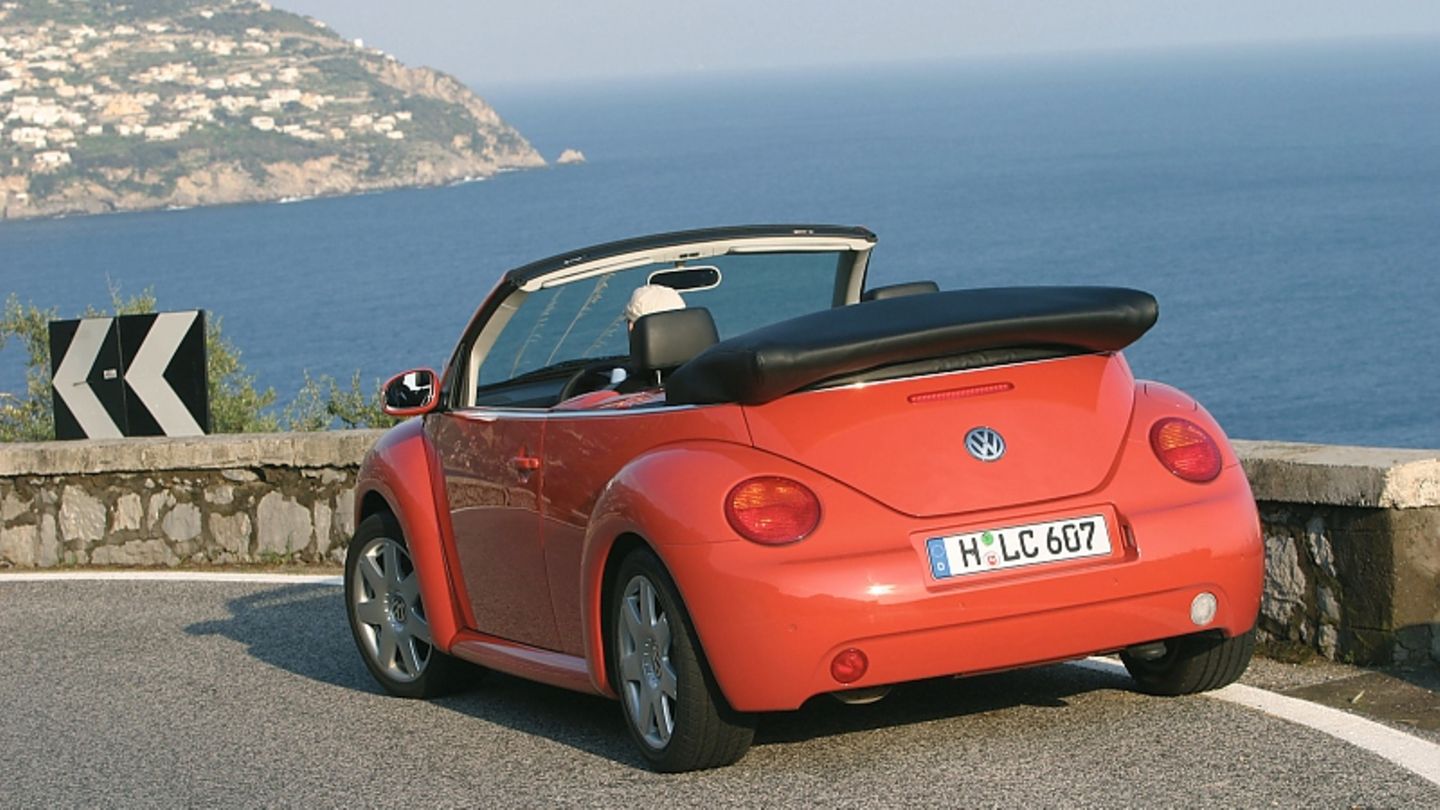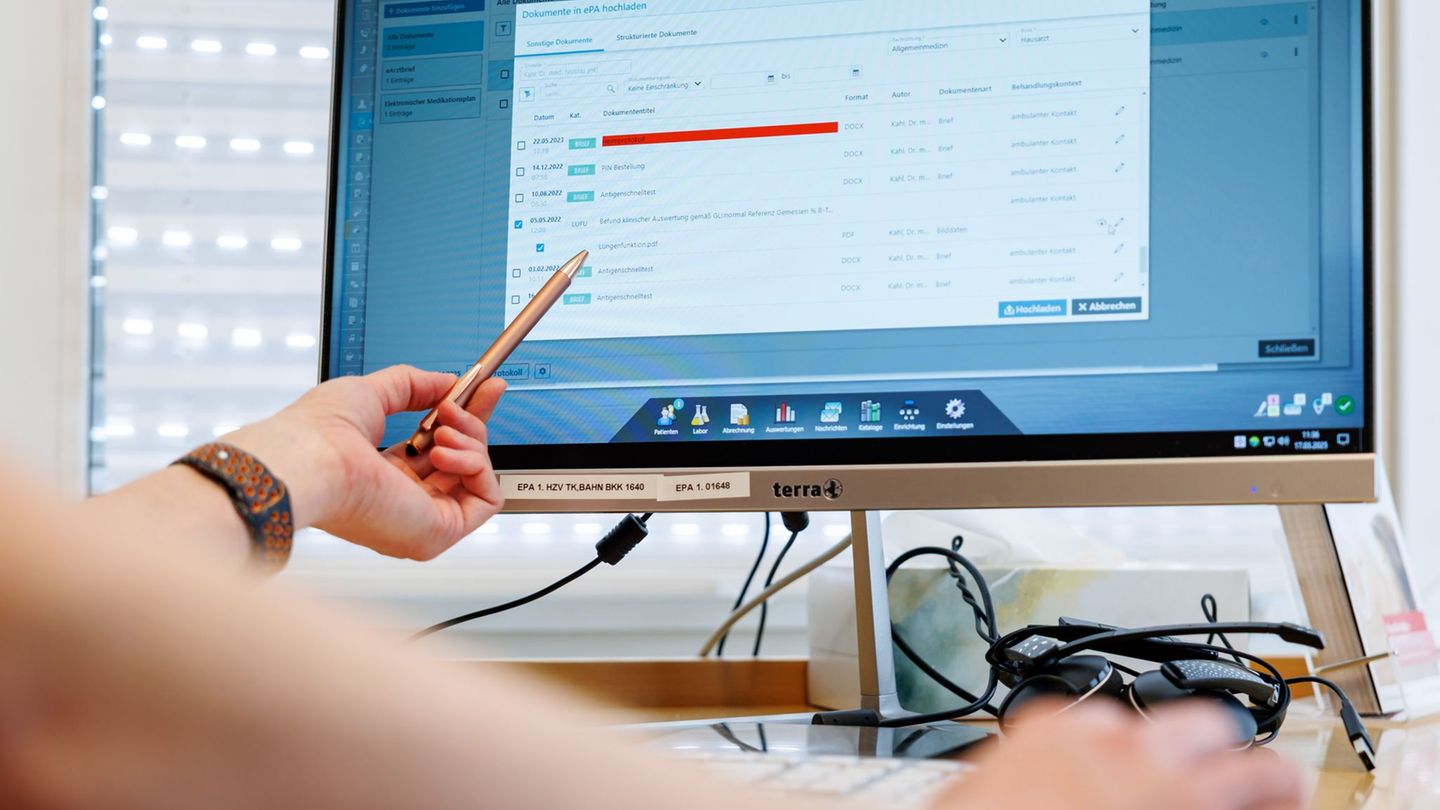In the USA, the VW New Beetle was a real success as the resurrection of the legendary Beetle. In Europe, the Mexicans found it much more difficult. However, the first new Beetle generation should still be a classic.
Of course, the 4.15 meter long VW New Beetle was not as successful a model as the original Beetle at the time – neither in Europe nor in the USA. The ancestor’s narrow wheel tracks were simply too big for that, because after all, the real Beetle was produced from the Second World War until 1985 – in South America even until 2003. The VW New Beetle was technically a Golf IV, with which it shared the platform for the compact class from 1997. But while the fourth generation of Golf brought the design of the successful VW Golf III to a completely new level, as did its equipment, the New Beetle initially concentrated a little more superficially on its North American customers. The retro design of the studies was saved to a large extent in the series model presented in 1998. The VW New Beetle therefore looked like a VW Beetle of the modern age – with free-standing fenders, its spherical shape and a manageable amount of space, it offered significantly less car than the Golf IV with its front engine, but had significantly more character. From 2003 the VW New Beetle was also available as a convertible, which differed significantly from the VW Golf Cabrio at the time and also played with retro charm with its fabric roof and tarpaulin.
The retro style was not only found on the outside, but also in the interior with a central instrument that gave the driver the most important information as a reminiscence of old Beetle times, an equally rounded center console and nice details such as the attached flower vase that you can see from the original Beetle knew the 1950s. The previously planned eco and energy-saving engines for the concept studies – some even with hybridization – did not make it into series production. So there was the slimmed-down drive portfolio of the VW Golf, with the efficient TDI versions with 90 and later 100 or 105 PS enjoying great popularity in Europe, although the engines were quite rough fellows with pump-nozzle technology. In Germany in particular, many New Beetles in their brightly colored colors were also on the road with the narrow petrol engines without charging, which offered no driving fun at all with their 75 HP and only manageable driving fun with 102 HP. The power was optionally transmitted via a manual five-speed manual gearbox or a four-speed automatic.
And even the two-liter four-cylinder with 85 kW / 116 hp was no wonder in terms of dynamics and also quite thirsty, despite its manageable weight. Nevertheless, many customers around the world were traveling with it. The main reason for buying it was the design, not the drive. The 1.8-liter turbo four-cylinder, which was also installed as a Group engine in numerous Audi models up to the A4 and A6, was much more sporty in the New Beetle. In the 1.2-tonne New Beetle 1.8 T, it developed 110 kW / 150 PS and made the spherical cuddle ball, which was just popular with women, more than 200 km / h. Especially as a handset, from today’s perspective, it is one of the versions that you should take a closer look at when looking for a classic of tomorrow. In the USA, however, there were also many models with the 170 hp V5 engine, which fueled the VW Golf there just as in Europe. A real show and rarer than ever, the VW Beetle in its sportiest form as a 3.2 RSI with six cylinders, 3.2 liters displacement and 224 hp, in which it had nothing to do with the original Beetle of yore, is a real one Became a fun cannon.
Again and again, the mediocre workmanship was a topic of conversation among the Beetle fans, who organized themselves into clubs around the world. Because with the VW New Beetle it was not only a problem with the production in the Mexican plant in Puebla, but also with the built-in materials, which were not convincing. The closely related Beetle was far from the quality of a VW Golf IV. The range of used New Beetle models is larger than you might think. Solid vehicles with a mileage of less than 150,000 kilometers start at less than 3,000 euros – regardless of whether it is a convertible or a closed version. You should save yourself the 75 hp variant in any case and the two-liter diesel does not get an entry permit into many inner cities, so they also fail. The Beetle 1.8 T is the best and the 2.0 FSI is probably the easiest choice. A well-equipped convertible with 150 hp, air conditioning, aluminum rims and heated leather seats costs less than 10,000 euros. A real rarity is the VW Beetle 3.2 RSI with 224 hp, which is rarely offered and with a mileage of less than 50,000 kilometers quickly costs 40,000 euros.
I am a 24-year-old writer and journalist who has been working in the news industry for the past two years. I write primarily about market news, so if you’re looking for insights into what’s going on in the stock market or economic indicators, you’ve come to the right place. I also dabble in writing articles on lifestyle trends and pop culture news.




